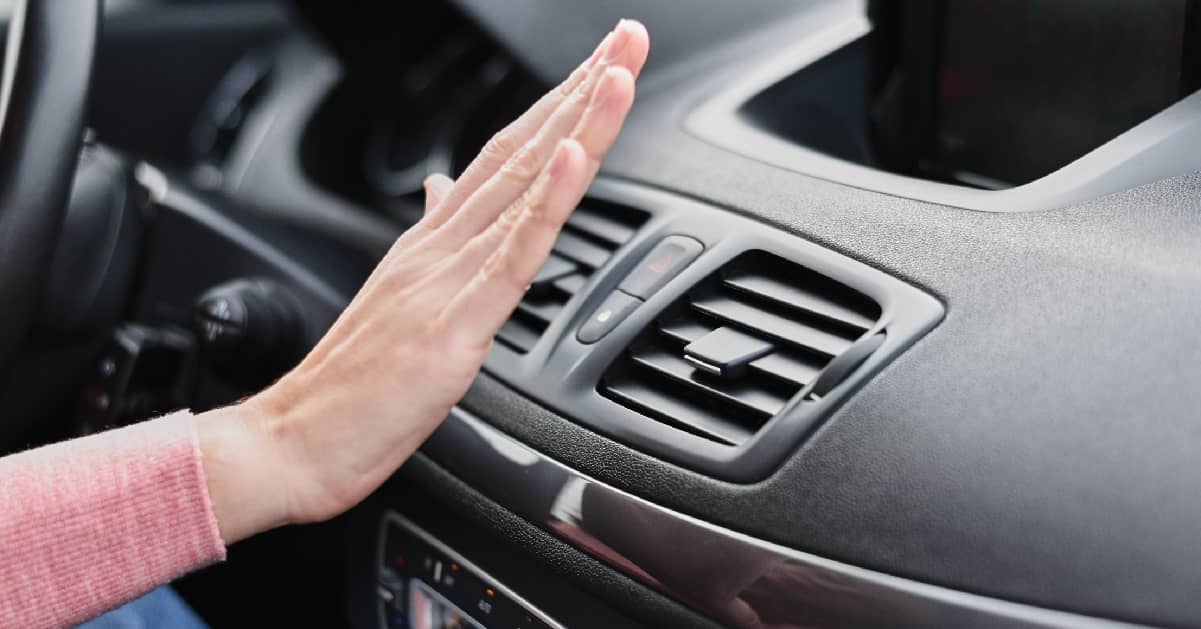

Articles
Car AC Only Cold When Driving
Modified: November 2, 2024
Get expert advice and tips on keeping your car's AC cold while driving. Read our informative articles to stay cool on the road.
(Many of the links in this article redirect to a specific reviewed product. Your purchase of these products through affiliate links helps to generate commission for Storables.com, at no extra cost. Learn more)
Introduction
Are you experiencing a strange issue with your car’s air conditioning system? Does it only blow cold air when the car is in motion but not when it’s idling or stationary? If so, you’re not alone. This puzzling problem can leave you feeling uncomfortable and frustrated, especially during hot summer months.
There can be several reasons why your car’s AC is only cold when driving. While it may seem like a complicated issue, it is often caused by one or more common factors that can be easily diagnosed and resolved. In this article, we will explore the possible causes behind this problem and provide you with solutions and troubleshooting steps to help you get your car’s AC functioning optimally.
Before we dive into the potential causes, it’s important to understand the basics of how a car’s AC system works. The AC system in most vehicles operates by compressing and expanding a refrigerant gas, which absorbs and releases heat to cool the air inside the car. The system contains several components, including the compressor, condenser, thermostat, fan, and air filter, all of which play crucial roles in the cooling process.
Now that we have a general understanding of how the AC system works, let’s explore the possible causes of why your car’s AC is only cold when driving. By identifying the underlying issue, you’ll be able to take appropriate steps to resolve it and enjoy a refreshing and comfortable ride, no matter the situation.
Key Takeaways:
- Keep your car’s AC system in top shape by addressing common issues such as low refrigerant levels, faulty compressors, and clogged condensers. Regular maintenance and professional assistance are key to ensuring consistent cooling performance.
- Don’t let a malfunctioning thermostat or electrical issues disrupt your car’s AC system. Seek professional help to diagnose and repair these issues promptly. Regular inspections and timely repairs will keep your AC blowing cold air in any driving situation.
Read more: Car Squeals When AC Is On
Possible Causes
When your car’s AC only blows cold air when driving and not when idling or stationary, there can be several potential causes behind this issue. Here are some common culprits to consider:
1. Low Refrigerant Levels
A common cause of this problem is low refrigerant levels in the AC system. Refrigerant is the substance that absorbs and releases heat to cool the air. When the refrigerant levels are low, the AC system may not be able to cool the air effectively, resulting in cold air only when the car is in motion.
2. Faulty Compressor
The compressor is a vital component of the AC system responsible for compressing the refrigerant and circulating it through the system. If the compressor is faulty or not functioning properly, it may not be able to cool the air adequately, leading to cold air only when the car is in motion.
3. Clogged Condenser
The condenser is responsible for dissipating heat from the refrigerant, allowing it to cool down. If the condenser becomes clogged with debris, dirt, or other contaminants, it can hinder the cooling process and result in cold air only when the car is moving.
Read more: Cooling Fan Comes On When Car Is Cold
4. Malfunctioning Thermostat
The thermostat regulates the temperature inside your car by controlling the flow of refrigerant. If the thermostat is malfunctioning or not calibrated correctly, it may not allow the AC system to cool the air consistently, causing the cold air only when driving issue.
5. Electrical Issues
Electrical problems, such as a malfunctioning relay or wiring issue, can disrupt the proper functioning of the AC system. These issues can interfere with the compressor or other components, resulting in cold air only when the car is in motion.
6. Damaged AC Fan
The AC fan is responsible for drawing air through the condenser to help dissipate heat. If the fan is damaged or not functioning correctly, it may not cool the refrigerant adequately, leading to cold air only when the car is moving.
7. Blocked Air Filter
An air filter is used to remove dust, pollen, and debris from the air entering the AC system. If the filter becomes blocked or clogged, it restricts airflow and makes it difficult for the AC system to cool the air effectively, resulting in cold air only when driving.
Read more: Car Jerking When AC Is On
8. Insufficient Cooling System
In some cases, the cooling system of the car may not be powerful enough to cool the air when the vehicle is stationary. This issue can occur if the cooling system is undersized or if there are other underlying issues affecting its performance.
Now that we have explored the possible causes of why your car’s AC is only cold when driving, it’s time to move on to the solutions and troubleshooting steps to resolve this issue.
Low Refrigerant Levels
One of the primary causes of a car’s AC only blowing cold air when driving is low refrigerant levels in the system. Refrigerant is a vital component that absorbs and releases heat to cool the air inside the car. When the refrigerant levels are low, the AC system struggles to cool the air effectively, resulting in cold air only when the vehicle is in motion.
Low refrigerant levels can occur due to leaks within the AC system. Over time, seals and connections can degrade, causing refrigerant to escape. Additionally, small leaks can develop in the AC system components, such as the compressor or condenser, leading to a gradual loss of refrigerant.
To address this issue, it is essential to first identify and fix any leaks in the AC system. This can be done by conducting a thorough inspection of the system, checking for signs of oil or refrigerant leaks. Once the leaks are repaired, the next step is to refill the refrigerant to the appropriate level.
Refilling the refrigerant requires the expertise and tools of a qualified automotive technician. They will be able to safely evacuate the remaining refrigerant, vacuum the system to remove any moisture or air, and then recharge it with the correct amount of refrigerant. It is important to note that overfilling the refrigerant can be just as detrimental as having low levels, so it must be done accurately.
Regular maintenance and inspection of the AC system can help prevent low refrigerant levels. By addressing leaks or other issues early on, you can ensure that your car’s AC provides consistent cooling performance throughout your journey, whether stationary or in motion.
In summary, low refrigerant levels can be a common cause of a car’s AC only blowing cold air when driving. Identifying and repairing leaks, followed by a professional refill of the refrigerant, is key to resolving this issue. By maintaining the proper levels of refrigerant, you can enjoy a comfortable and cool ride in any situation.
Faulty Compressor
A faulty compressor is another potential cause of a car’s AC only blowing cold air when driving. The compressor plays a crucial role in the AC system by compressing the refrigerant and circulating it through the system. If the compressor is faulty or not functioning correctly, it can result in inadequate cooling performance.
There are several reasons why a compressor can become faulty. Over time, the internal components of the compressor can wear out or become damaged, leading to decreased efficiency or complete failure. Additionally, issues such as a seized clutch or a broken pulley can prevent the compressor from functioning properly.
If you suspect a faulty compressor, it is best to have a professional mechanic inspect and diagnose the issue. They can perform tests to determine if the compressor is the source of the problem. In some cases, the compressor may be repairable, and the mechanic can replace any damaged components. However, if the compressor is beyond repair, it may need to be replaced with a new one.
Replacing a faulty compressor requires specialized knowledge and tools. The process involves evacuating the refrigerant from the system, disconnecting the compressor from the AC system, and installing the new compressor. Once the installation is complete, the AC system must be recharged with refrigerant to the appropriate levels.
Regular maintenance and servicing of the AC system can help prevent compressor issues. Proper lubrication and cleaning of the compressor can prolong its lifespan and ensure optimal performance. If you notice any unusual noises or reduced cooling capacity, it is essential to have the compressor inspected and repaired promptly to prevent further damage to the AC system.
In summary, a faulty compressor can be a culprit behind a car’s AC only blowing cold air when driving. Seeking professional help for diagnosis and repair is recommended. Whether it requires repair or replacement, addressing compressor issues will restore the AC system’s functionality and provide consistent cooling throughout your rides.
Clogged Condenser
A clogged condenser is another possible cause of a car’s AC only blowing cold air when driving. The condenser is a vital component of the AC system responsible for dissipating heat from the refrigerant, allowing it to cool down and provide cold air. However, if the condenser becomes clogged with debris, dirt, or other contaminants, it can hinder the cooling process and result in reduced airflow and cooling performance.
Over time, the condenser can accumulate dirt, leaves, and other debris, especially if the car is driven in dusty or polluted environments. This build-up restricts the airflow through the condenser fins, impeding heat dissipation and reducing the cooling efficiency of the AC system. As a result, the AC may only blow cold air when the car is in motion, as the increased airflow helps compensate for the reduced cooling capacity.
To address a clogged condenser, it is important to clean or remove the accumulated debris. This can typically be done by using compressed air or a specialized condenser cleaning solution. It is recommended to have this cleaning procedure performed by a professional technician who has the necessary tools and expertise to ensure proper and thorough cleaning without causing any damage to the condenser.
In addition to cleaning, it is also crucial to inspect the condenser for any physical damage or leaks. Bent or damaged fins can obstruct airflow and affect the cooling performance. If any damage is found, the condenser may need to be repaired or replaced.
Regular maintenance and inspection of the condenser can help prevent clogs and maintain optimal airflow. It is important to keep the area around the condenser free from debris and ensure that the condenser fins are not bent or damaged. In dusty or polluted environments, using a protective grille or cover can help minimize the accumulation of debris.
In summary, a clogged condenser can be a reason why a car’s AC only blows cold air when driving. Cleaning or removing the accumulated debris and ensuring the condenser’s proper functioning can restore the cooling performance of the AC system. Regular maintenance will help prevent clogs and ensure consistent airflow for a comfortable ride in any situation.
Read more: Car Making Noise When AC Is On
Malfunctioning Thermostat
A malfunctioning thermostat can be a possible cause of a car’s AC only blowing cold air when driving. The thermostat plays a crucial role in regulating the temperature inside the car by controlling the flow of refrigerant. If the thermostat is malfunctioning or not calibrated correctly, it can hinder the AC system from cooling the air consistently.
There are a few potential issues that can arise with the thermostat. It may get stuck in one position, preventing the proper adjustment of refrigerant flow. This can result in either the AC system not cooling at all or only providing cold air when the car is in motion. Additionally, the thermostat sensor may experience a malfunction, sending incorrect temperature readings to the AC system and affecting its cooling performance.
If you suspect a malfunctioning thermostat, it is best to have a professional mechanic inspect and diagnose the issue. They can perform tests to check the thermostat’s functionality, including verifying proper temperature readings and inspecting the wiring and connections. Depending on the diagnosis, the mechanic may need to repair or replace the thermostat to restore proper functioning.
Fixing a malfunctioning thermostat involves replacing any faulty components or recalibrating the sensor as necessary. In some cases, the thermostat may need to be replaced entirely. This should be done by a qualified technician who has the expertise to handle the intricacies of the AC system and ensure accurate temperature regulation.
Regular maintenance and servicing of the AC system, including checking the thermostat’s functionality, is essential to prevent issues. Cleaning or replacing air filters, inspecting electrical connections, and maintaining proper refrigerant levels can help prevent thermostat malfunctions and ensure consistent cooling performance.
In summary, a malfunctioning thermostat can cause a car’s AC to only blow cold air when driving. Seeking professional assistance is recommended to diagnose and repair the issue. Whether it requires repairs or a thermostat replacement, restoring proper functionality will allow for consistent cooling performance in any situation.
Electrical Issues
Electrical issues can be another potential cause of a car’s AC only blowing cold air when driving. The AC system relies on various electrical components to function correctly, including relays, switches, and wiring. If there are problems with the electrical system, it can disrupt the proper functioning of the AC system and affect its cooling performance.
Common electrical issues that can impact the AC system include faulty relays, damaged wiring, or issues with switches or sensors. These problems can prevent the AC compressor from receiving the necessary electrical signals, resulting in reduced cooling performance or the AC only blowing cold air when the car is in motion.
If you suspect electrical issues with the AC system, it is best to have a professional mechanic conduct a thorough inspection and diagnostic tests. They will use specialized tools to check the electrical connections, test the relays and switches, and ensure that the required electrical signals are being transmitted to the AC components.
Based on the diagnostic results, the mechanic will be able to pinpoint the specific electrical issue and recommend an appropriate course of action. This may involve repairing or replacing damaged wiring, replacing faulty relays or switches, or recalibrating sensors if necessary.
It is crucial to address electrical issues promptly to prevent further damage to the AC system and ensure its optimal performance. Electrical problems can lead to unexpected behavior of the AC system, such as intermittent cooling or complete failure.
Regular maintenance of the electrical system, including inspecting and cleaning connections, can help prevent electrical issues from occurring. Additionally, avoiding overloading the electrical system by using excessive accessories can reduce the strain on the AC system and prevent potential electrical problems.
In summary, electrical issues can be a possible cause for a car’s AC only blowing cold air when driving. Seeking professional help for inspection and diagnosis is recommended. Addressing any electrical problems promptly will restore the proper functioning of the AC system and provide consistent cooling performance.
Damaged AC Fan
A damaged AC fan can contribute to a car’s AC only blowing cold air when driving. The AC fan plays a crucial role in drawing air through the condenser to help dissipate heat and cool the refrigerant. If the fan is damaged or not functioning correctly, it can hinder the cooling process and result in reduced airflow and cooling performance.
There are a few reasons why the AC fan can become damaged. It can suffer from physical damage due to debris or road hazards, or it may experience electrical issues that cause it to malfunction. Additionally, the fan motor or blades can wear out over time, leading to reduced airflow and cooling capacity.
If you suspect a damaged AC fan, it is essential to have a professional mechanic inspect and diagnose the issue. They can check the fan blades, motor, and electrical connections to determine the extent of the damage. In some cases, a simple repair or replacement of a damaged blade or fan motor may be sufficient. However, if the damage is significant, the entire fan assembly may need to be replaced.
Replacing a damaged AC fan requires expertise and specialized tools. The process involves disconnecting the fan from the AC system, removing the damaged components, and installing the new fan assembly. The electrical connections must be properly secured, and the fan’s operation should be tested to ensure proper functionality.
Regular maintenance of the AC fan can help prevent damage and maintain optimal airflow. It is important to regularly inspect the fan for any visible damage, clean away any debris, and ensure that the blades are free from obstructions. Additionally, proper lubrication of the fan motor can help prolong its lifespan and ensure smooth operation.
In summary, a damaged AC fan can be a reason why a car’s AC only blows cold air when driving. Having a professional mechanic inspect and repair the fan is recommended. Whether it requires a simple repair or a complete replacement, addressing a damaged AC fan will restore proper airflow and cooling performance for a comfortable ride.
Blocked Air Filter
A blocked air filter can be a possible cause of a car’s AC only blowing cold air when driving. The air filter is a critical component of the AC system and is responsible for removing dust, pollen, and debris from the air entering the system. If the air filter becomes blocked or clogged, it can restrict the airflow and make it difficult for the AC system to cool the air effectively.
Over time, the air filter can accumulate dirt, dust, and other particles, especially if it is not replaced regularly. This build-up restricts the air intake, reducing the flow of air to the AC system and hindering its cooling capacity. As a result, the AC may only blow cold air when the car is in motion, as the increased airflow helps compensate for the restricted air filter.
To address a blocked air filter, it is important to inspect and clean or replace it as necessary. The location of the air filter may vary depending on the car model, but it is typically found in the engine compartment or near the AC system. Refer to the vehicle’s manual or consult a professional mechanic for guidance on locating and accessing the air filter.
If the air filter is washable, you can clean it using compressed air or a mild detergent. Alternatively, if it is disposable, it should be replaced with a new one. Regular maintenance and replacement of the air filter are crucial to ensure optimal airflow and protect the AC system from debris and contaminants.
In addition to cleaning or replacement, it is important to avoid conditions that can lead to a blocked air filter. Driving in dusty environments, like construction sites or unpaved roads, can accelerate the build-up of debris on the filter. Using a protective grille or cover can help minimize the accumulation of debris and prolong the life of the air filter.
In summary, a blocked air filter can cause a car’s AC system to only blow cold air when driving. Regular inspection, cleaning, and replacement of the air filter are essential to maintain proper airflow and optimize cooling performance. By addressing a blocked air filter, you can enjoy consistent and refreshing air conditioning during your travels.
Read more: Car AC Makes Hissing Noise When Turned On
Insufficient Cooling System
An insufficient cooling system can contribute to a car’s AC only blowing cold air when driving. The cooling system of the car, which includes components such as the radiator, water pump, and thermostat, is responsible for regulating the engine’s temperature. If the cooling system is not functioning properly, it can lead to reduced cooling capacity of the AC system.
There are several reasons why the cooling system may be insufficient. The radiator may be clogged or damaged, impeding the proper flow of coolant and heat dissipation. The water pump may not be circulating the coolant effectively, resulting in inadequate cooling. Additionally, a malfunctioning thermostat can prevent the engine from reaching the optimal operating temperature, affecting the cooling performance.
If you suspect an insufficient cooling system, it is necessary to have a professional mechanic inspect and diagnose the issue. They can perform tests on the cooling system components, including checking for coolant flow, measuring temperatures, and inspecting for any signs of damage or clogs.
Based on the diagnostic results, the mechanic will recommend appropriate repair or replacement procedures. This may involve flushing and cleaning the radiator, repairing or replacing the water pump, or recalibrating the thermostat. In some cases, if the cooling system damage is extensive or the components are beyond repair, they may need to be replaced.
Maintaining the cooling system on a regular basis can help prevent issues. Keeping the radiator and cooling fins clean from debris and ensuring proper coolant levels will contribute to optimal cooling performance. Regular inspection of the cooling system components, such as the radiator hoses and water pump, can help identify any potential issues before they escalate.
In summary, an insufficient cooling system can cause a car’s AC only to blow cold air when driving. Seeking professional assistance for inspection and diagnosis is recommended. Addressing any issues with the cooling system components will restore proper cooling capacity and ensure consistent AC performance throughout your journeys.
Solutions and Troubleshooting
Now that we have explored the possible causes behind a car’s AC only blowing cold air when driving, let’s discuss the solutions and troubleshooting steps to resolve this issue. Depending on the specific cause, here are some actions you can take:
1. Refill Refrigerant
If low refrigerant levels are found to be the cause, it is essential to refill the refrigerant to the appropriate levels. Consult a professional automotive technician to properly evacuate any remaining refrigerant, vacuum the system, and recharge it with the correct amount of refrigerant.
2. Repair or Replace Compressor
If a faulty compressor is identified, consider repairing or replacing it. A professional mechanic can assess the condition of the compressor and perform the necessary repairs or replacement to restore its proper functioning.
Read more: Car Smells Like Gas When AC Is On
3. Clean or Replace Condenser
If a clogged condenser is causing the issue, it is crucial to clean or replace it. A mechanic can use compressed air or a condenser cleaning solution to remove the accumulated debris or, if necessary, replace the condenser with a new one.
4. Check and Fix Thermostat
If a malfunctioning thermostat is hindering proper cooling, have it checked and repaired or recalibrated by a professional technician. They will ensure that the thermostat is functioning correctly and allowing the AC system to cool the air consistently.
5. Address Electrical Problems
If electrical issues are affecting the AC system, seek professional help to diagnose and repair the electrical components. This may involve repairing or replacing faulty relays, switches, or wiring to restore proper electrical signals to the AC system.
6. Repair or Replace AC Fan
A damaged AC fan can be resolved by repairing or replacing the fan assembly. A mechanic can inspect the fan blades, motor, and electrical connections to determine the extent of the damage and perform the necessary repairs or replacements.
Read more: Car Overheats When AC Is On And Idle
7. Replace Air Filter
If a blocked air filter is the cause, clean or replace the air filter as needed. Regular inspection and maintenance of the air filter will help prevent airflow restrictions and ensure optimal performance of the AC system.
8. Inspect Cooling System Components
If an insufficient cooling system is the culprit, have a professional mechanic inspect and diagnose the issue. They can perform tests on the radiator, water pump, and thermostat, and recommend appropriate repairs or replacements to restore optimal cooling performance.
Remember, it is always recommended to seek professional assistance when dealing with complex AC system issues. A qualified automotive technician will have the expertise and tools necessary to accurately diagnose and resolve the problem.
By addressing and troubleshooting the specific cause of a car’s AC only blowing cold air when driving, you can ensure that your AC system provides consistent and reliable cooling performance, no matter the driving conditions.
Refill Refrigerant
One of the potential causes for a car’s AC only blowing cold air when driving is low refrigerant levels in the system. Refrigerant is a crucial component that absorbs and releases heat to cool the air inside the car. When the refrigerant levels are low, the AC system may struggle to cool the air effectively, resulting in cold air only when the vehicle is in motion.
If you suspect low refrigerant levels, it is crucial to have a professional automotive technician assess and refill the refrigerant to the appropriate levels. This is not a task that can be easily done at home since it requires specialized tools and knowledge.
The process of refilling refrigerant begins by evacuating any remaining refrigerant in the system. This is done using a vacuum pump to remove the old refrigerant safely. After evacuation, the AC system is then tested for leaks to ensure that the newly added refrigerant does not escape.
Once the system is leak-free, the technician will add the correct amount of refrigerant to the system. It is imperative to add the exact quantity of refrigerant as recommended by the vehicle manufacturer. Adding too little or too much refrigerant can adversely affect the cooling performance of the AC system.
Working with refrigerant requires caution and proper protective measures, as it is a substance that can be harmful if mishandled. Therefore, it is crucial to leave this task to a qualified and experienced technician who can ensure the safe and accurate topping up of the refrigerant.
Regular maintenance of the AC system, including checking for any leaks or loss of refrigerant, can help prevent low refrigerant levels. If any leaks are detected, they should be promptly repaired to avoid recurring low refrigerant issues.
In summary, if your car’s AC only blows cold air when driving, low refrigerant levels could be a possible cause. To address this issue, seek the help of a professional automotive technician who can safely and accurately refill the refrigerant to the appropriate levels. By maintaining optimal refrigerant levels, you can ensure that your AC system provides consistent and effective cooling performance.
Repair or Replace Compressor
If your car’s AC only blows cold air when driving, a faulty compressor may be the culprit. The compressor plays a vital role in the AC system, as it is responsible for compressing the refrigerant gas and circulating it through the system, allowing for effective cooling.
When the compressor is faulty or not functioning correctly, it can impact the cooling performance of the AC system. Common issues with the compressor include worn-out internal components, damage to the clutch or pulley, or electrical malfunctions.
If you suspect a faulty compressor, it is essential to have a professional mechanic diagnose the issue and determine the best course of action. They will perform tests to assess the compressor’s functionality and identify any damaged components.
In some cases, minor repairs may be sufficient to restore the compressor’s operation. This can involve replacing worn-out or damaged parts, such as the clutch or pulley. However, if the damage is extensive or the compressor is beyond repair, a replacement may be necessary.
Replacing a compressor is a complex task that should be done by a qualified technician. They will start by evacuating the refrigerant from the system to ensure a safe working environment. The old compressor is then removed, and the new one is installed, along with any necessary seals or gaskets.
Once the new compressor is in place, the AC system is recharged with the appropriate amount of refrigerant to the manufacturer’s specifications. This ensures optimal cooling performance and protects the compressor from potential damage due to improper refrigerant levels.
Regular maintenance of the AC system, including checking for any unusual noises or reduced cooling capacity, can help detect compressor issues early on. Addressing concerns promptly can prevent further damage to the compressor and potentially save you from a full replacement.
In summary, a faulty compressor can lead to a car’s AC only blowing cold air when driving. Seeking the assistance of a professional mechanic is essential to accurately diagnose the issue and determine if repair or replacement is required. By addressing compressor problems, you can restore the AC system’s functionality and enjoy consistent cooling performance.
Read more: Car Smells Like Burning Rubber When AC Is On
Clean or Replace Condenser
If your car’s AC only blows cold air when driving, a clogged or damaged condenser could be the underlying issue. The condenser is a critical component of the AC system responsible for dissipating heat from the refrigerant, allowing it to cool down and provide cold air inside the car.
Over time, the condenser can become clogged with debris, dirt, or other contaminants. This build-up restricts the airflow through the fins of the condenser, impairing the heat dissipation process and compromising the overall cooling performance of the AC system.
To address a clogged condenser, the first step is to have a professional mechanic perform a thorough inspection. They will assess the condition of the condenser and determine whether it can be cleaned or needs to be replaced.
If the condenser is only mildly clogged, a thorough cleaning may be sufficient. Using compressed air or a specialized condenser cleaning solution, the technician will remove the accumulated debris, ensuring that the airflow is restored to its optimal state.
In more severe cases, where the condenser cannot be adequately cleaned or has suffered physical damage, replacement may be necessary. A new condenser will be installed by the technician, ensuring proper alignment and connection to the AC system.
Regular maintenance of the AC system is crucial to prevent condenser issues. Keeping the area around the condenser clean and free from debris can help minimize the build-up and reduce the chances of a clogged condenser.
Additionally, using a protective grille or cover, especially in dusty or debris-prone areas, can provide an additional layer of defense for the condenser.
In summary, a clogged or damaged condenser can lead to a car’s AC only blowing cold air when driving. Having a professional mechanic clean or replace the condenser is crucial to restore optimal cooling performance. Regular maintenance and protection of the condenser can help prevent issues and ensure consistent airflow and cooling throughout your drives.
Check and Fix Thermostat
If your car’s AC only blows cold air when driving, a malfunctioning thermostat may be the cause of the issue. The thermostat plays a critical role in regulating the temperature inside the car by controlling the flow of refrigerant in the AC system.
A malfunctioning thermostat can prevent the AC system from cooling the air consistently, leading to cold air only when the car is in motion. There are a few potential issues that can arise with the thermostat. It may get stuck in one position, preventing the proper adjustment of refrigerant flow. Alternatively, the thermostat sensor may malfunction, providing incorrect temperature readings to the AC system.
To diagnose and fix thermostat-related issues, it is best to consult a professional mechanic. They have the necessary expertise and equipment to accurately assess the thermostat’s functionality and determine the most appropriate solution.
The mechanic will perform tests to check the thermostat’s responsiveness and ensure that it is accurately reading the temperature inside the car. They may also inspect the wiring and connections associated with the thermostat to identify any potential issues.
If a malfunctioning thermostat is identified, the mechanic will proceed to fix the issue. In some cases, a simple recalibration or repair of the thermostat may be sufficient. This may involve adjusting the temperature settings or replacing damaged components.
In more severe cases, a complete replacement of the thermostat may be necessary. This ensures the reliable and accurate regulation of the AC system’s temperature, allowing for consistent and optimal cooling performance.
Maintaining the AC system through regular inspections and servicing can help prevent thermostat malfunctions. It is also important to keep the thermostat and its surrounding area clean and free from debris.
In summary, a malfunctioning thermostat can be a reason why your car’s AC only blows cold air when driving. Seeking the assistance of a professional mechanic for diagnosis and repair is recommended. By addressing any thermostat-related issues, you can restore the AC system’s functionality and ensure consistent cooling performance.
Address Electrical Problems
If your car’s AC only blows cold air when driving, electrical problems within the AC system may be to blame. The AC system relies on various electrical components, including relays, switches, and wiring, to function correctly. When these components experience issues, it can disrupt the proper functioning of the AC system and affect its cooling performance.
Common electrical problems that can impact the AC system include faulty relays, damaged wiring, or issues with switches or sensors. These issues can prevent the AC compressor from receiving the necessary electrical signals, resulting in reduced cooling performance or cold air only when the car is in motion.
When faced with electrical problems, it is crucial to consult a professional mechanic who specializes in automotive electrical systems. They will have the expertise and proper diagnostic tools to identify the specific electrical issue and recommend the appropriate solution.
The mechanic will perform tests on the electrical components, including checking the relays, switches, and sensors, to ensure they are functioning correctly. They will also inspect the wiring for any signs of damage or loose connections.
Based on the diagnostic findings, the mechanic will address the electrical problems accordingly. This may involve repairing or replacing faulty relays, switches, or damaged wiring to restore proper electrical signals to the AC system.
It is important to address electrical problems promptly to prevent further damage to the AC system and ensure its optimal performance. Ignoring or delaying repairs can lead to more extensive electrical issues and potential system failure.
Maintaining the electrical system of the car’s AC through regular inspections and servicing can help prevent issues. It is also important to avoid overloading the electrical system by using excessive accessories, as this can strain the system and affect the AC’s performance.
In summary, when faced with electrical problems causing the AC to only blow cold air when driving, consulting a professional mechanic is crucial. They will diagnose and address the specific electrical issues, ensuring the AC system functions properly and provides consistent cooling performance.
Repair or Replace AC Fan
If your car’s AC only blows cold air when driving, a damaged AC fan may be the cause of the issue. The AC fan plays a crucial role in drawing air through the condenser to help dissipate heat and cool the refrigerant. When the AC fan is damaged or not functioning correctly, it can hinder the cooling process and result in reduced airflow and cooling performance.
There are a few reasons why the AC fan can become damaged. It may suffer from physical damage due to debris or road hazards or experience electrical issues that cause it to malfunction. Additionally, the fan motor or blades may wear out over time, leading to reduced airflow and cooling capacity.
If you suspect a damaged AC fan, it is essential to have a professional mechanic inspect and diagnose the issue. They will assess the condition of the fan blades, motor, and electrical connections to determine the extent of the damage.
In some cases, minor repairs may be sufficient to restore the AC fan’s operation. This can involve replacing damaged blades or the fan motor. Electrical issues can be addressed by repairing or replacing faulty wiring or connections.
If the damage to the AC fan is extensive or the repairs are not feasible, a replacement may be necessary. The mechanic will install a new AC fan assembly, ensuring its proper alignment and connection to the AC system.
Replacing the AC fan requires specialized knowledge and tools. The technician will ensure that the electrical connections are properly secured and that the fan’s operation is tested to ensure proper functionality.
Regular maintenance of the AC fan can help prevent damage and maintain optimal airflow. Regularly inspecting the fan for any visible damage, cleaning away debris, and ensuring the blades are free from obstructions will contribute to the fan’s longevity and optimal performance.
In summary, a damaged AC fan can be a cause for a car’s AC only blowing cold air when driving. Seeking professional assistance to inspect, repair, or replace the AC fan is recommended. By addressing AC fan issues promptly, you can restore proper airflow and cooling performance, providing a comfortable ride in any situation.
Read more: Why Does My Car Shake When I Turn On The AC
Replace Air Filter
If your car’s AC only blows cold air when driving, a blocked air filter may be the culprit. The air filter is a crucial component of the AC system, responsible for removing dust, pollen, and debris from the air entering the system. When the air filter becomes blocked or clogged, it restricts the airflow, making it difficult for the AC system to cool the air effectively.
Over time, the air filter can accumulate dirt, dust, and other particles, particularly if it is not replaced regularly. This build-up restricts the air intake, reducing the flow of fresh air to the AC system, and compromising its cooling capacity. As a result, the AC may only blow cold air when the car is in motion, as the increased airflow compensates for the restricted air filter.
To address a blocked air filter, the first step is to inspect and replace it as necessary. The location of the air filter may vary depending on the car model, but it is typically found in the engine compartment or near the AC system. Refer to the vehicle’s manual or consult a professional mechanic for guidance on locating and accessing the air filter.
If the air filter is washable, you can clean it using compressed air or a mild detergent. Ensure it is completely dry before reinstalling it. However, if the air filter is disposable, it should be replaced with a new one. Disposable air filters are typically inexpensive and widely available at automotive supply stores.
Regular maintenance and replacement of the air filter are crucial to ensure optimal airflow and protect the AC system from debris and contaminants. It is recommended to inspect and replace the air filter at regular intervals, as specified by the vehicle manufacturer.
Additionally, it is important to avoid conditions that can quickly lead to a blocked air filter. Driving in dusty or polluted environments, such as construction sites or unpaved roads, can accelerate the accumulation of debris on the filter. Using a protective grille or cover can help minimize the accumulation and prolong the life of the air filter.
In summary, a blocked air filter can cause a car’s AC system to only blow cold air when driving. Regular inspection and replacement of the air filter are essential to maintaining proper airflow and optimizing cooling performance. By addressing a blocked air filter, you can ensure consistent and refreshing air conditioning throughout your journeys.
Check the refrigerant levels in your car’s AC system. Low refrigerant can cause the AC to only blow cold air when the car is in motion. Have a professional inspect and recharge the system if needed.
Inspect Cooling System Components
If your car’s AC only blows cold air when driving, it’s important to inspect the cooling system components to ensure they are functioning properly. The cooling system plays a vital role in regulating the temperature of the engine and assisting in the cooling process of the AC system.
There are several components of the cooling system that should be inspected, including the radiator, water pump, hoses, and thermostat. A malfunction in any of these components can impact the cooling performance of the AC system.
Start by visually inspecting the radiator for any signs of damage or leakage. Check for bent fins, corrosion, or any obstructions that may hinder proper cooling. If any issues are identified, it may be necessary to repair or replace the radiator.
Next, examine the water pump for any leaks or damage. The water pump is responsible for circulating the coolant throughout the engine and the AC system. If the water pump is not functioning properly, it can affect the overall cooling performance. Addressing any water pump issues may involve repairing or replacing the pump.
Inspect the hoses connected to the cooling system for signs of wear, leaks, or blockages. Any damaged hoses should be repaired or replaced to prevent coolant leakage or restricted flow, which can affect the cooling capacity of the AC system.
Additionally, check the thermostat of the cooling system. The thermostat regulates the flow of coolant to maintain the engine temperature. If the thermostat is malfunctioning, it can impact the cooling performance of the AC system. Consider repairing or replacing the thermostat if necessary.
Regular maintenance of the cooling system is crucial to prevent issues. Flushing and replacing the coolant at recommended intervals can help ensure optimal performance. Adequate levels of coolant should be maintained to support the AC system’s cooling process.
It is important to note that inspecting and repairing the cooling system components may require the expertise of a professional mechanic. They have the knowledge and specialized tools to diagnose and address any issues with the cooling system.
In summary, inspecting the cooling system components is essential when a car’s AC only blows cold air when driving. Proper maintenance and prompt repair of any damaged components, such as the radiator, water pump, hoses, or thermostat, will help ensure the cooling system functions optimally, supporting the AC system to provide consistent cooling performance.
Conclusion
Experiencing a car’s AC only blowing cold air when driving can be frustrating and uncomfortable, especially during hot weather. However, by understanding and addressing the potential causes behind this issue, you can restore the functionality of your AC system and enjoy a consistently cool ride.
In this article, we explored several possible causes for the problem: low refrigerant levels, a faulty compressor, a clogged condenser, a malfunctioning thermostat, electrical issues, a damaged AC fan, a blocked air filter, and an insufficient cooling system. Each of these factors can contribute to a car’s AC system only blowing cold air when in motion.
We discussed the solutions and troubleshooting steps for each cause, including refilling refrigerant levels, repairing or replacing the compressor, cleaning or replacing the condenser, checking and fixing the thermostat, addressing electrical problems, repairing or replacing the AC fan, replacing the air filter, and inspecting the cooling system components.
It’s important to note that diagnosing and addressing these issues may require the expertise of a professional automotive technician. They have the necessary knowledge, experience, and tools to accurately identify and resolve the specific cause of the problem.
To prevent future issues with your car’s AC system, regular maintenance and inspections are crucial. This includes maintaining proper refrigerant levels, replacing air filters as recommended, cleaning and protecting the condenser, and conducting routine checks of the cooling system components.
In conclusion, if your car’s AC is only blowing cold air when driving, it’s essential to investigate the potential causes and take appropriate action to rectify the issue. By addressing the underlying problem, you can enjoy consistently efficient and refreshing cooling from your car’s AC system throughout your journeys.
Frequently Asked Questions about Car AC Only Cold When Driving
Was this page helpful?
At Storables.com, we guarantee accurate and reliable information. Our content, validated by Expert Board Contributors, is crafted following stringent Editorial Policies. We're committed to providing you with well-researched, expert-backed insights for all your informational needs.


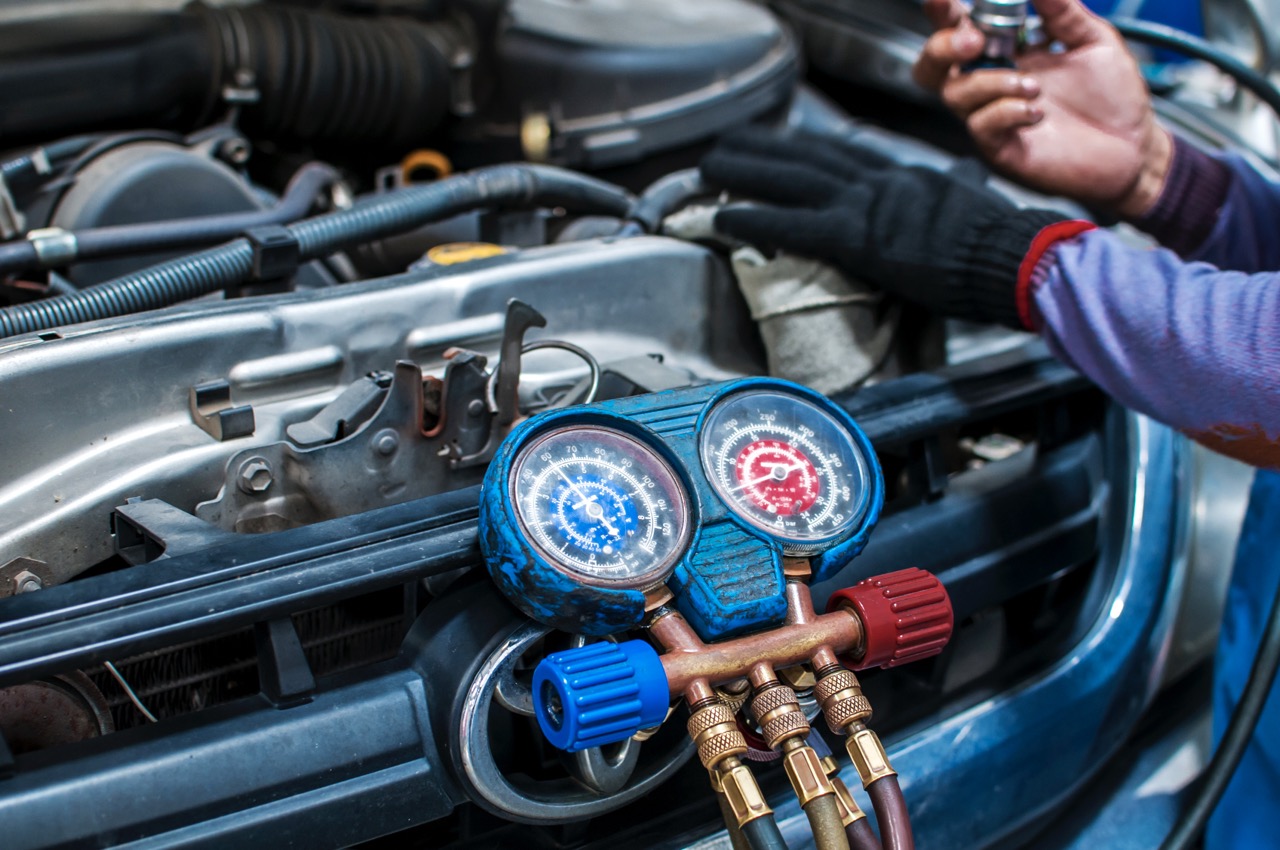
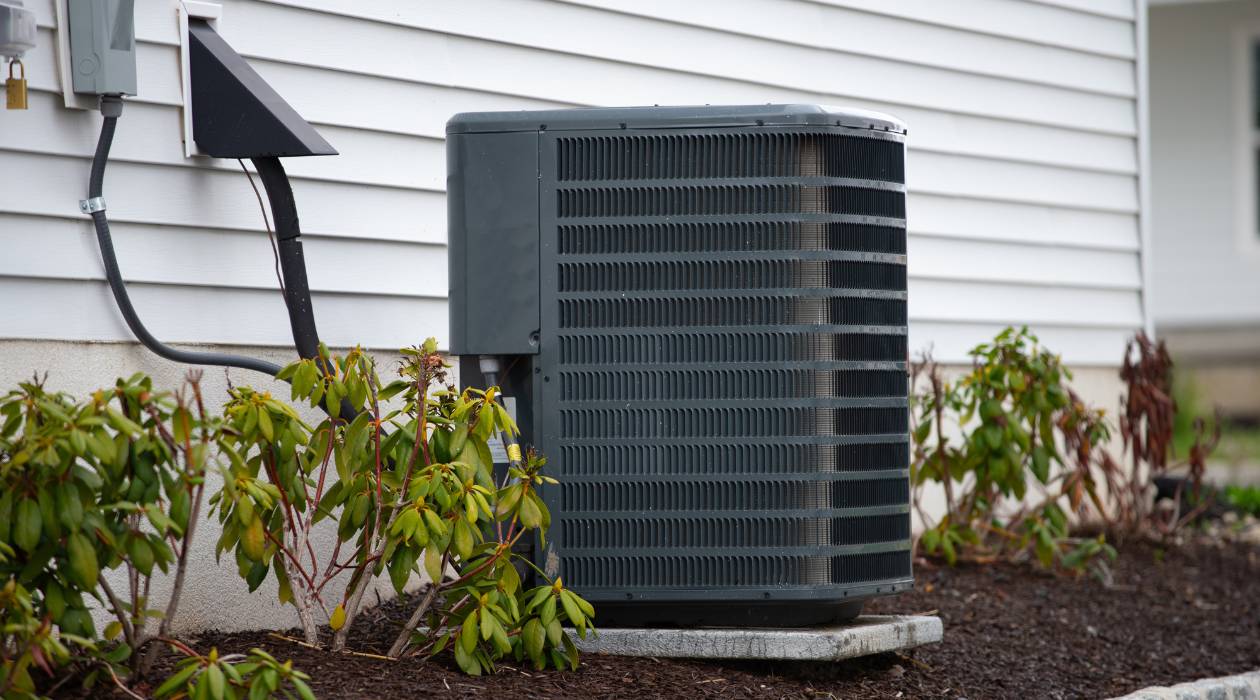
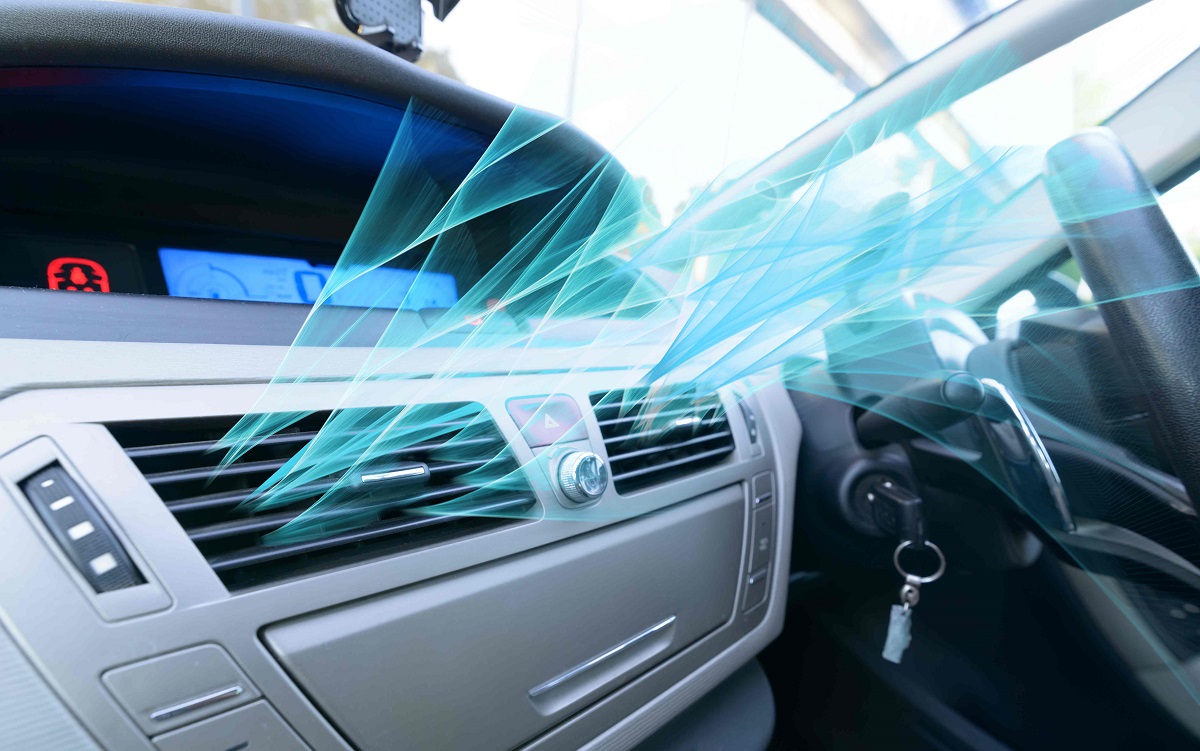
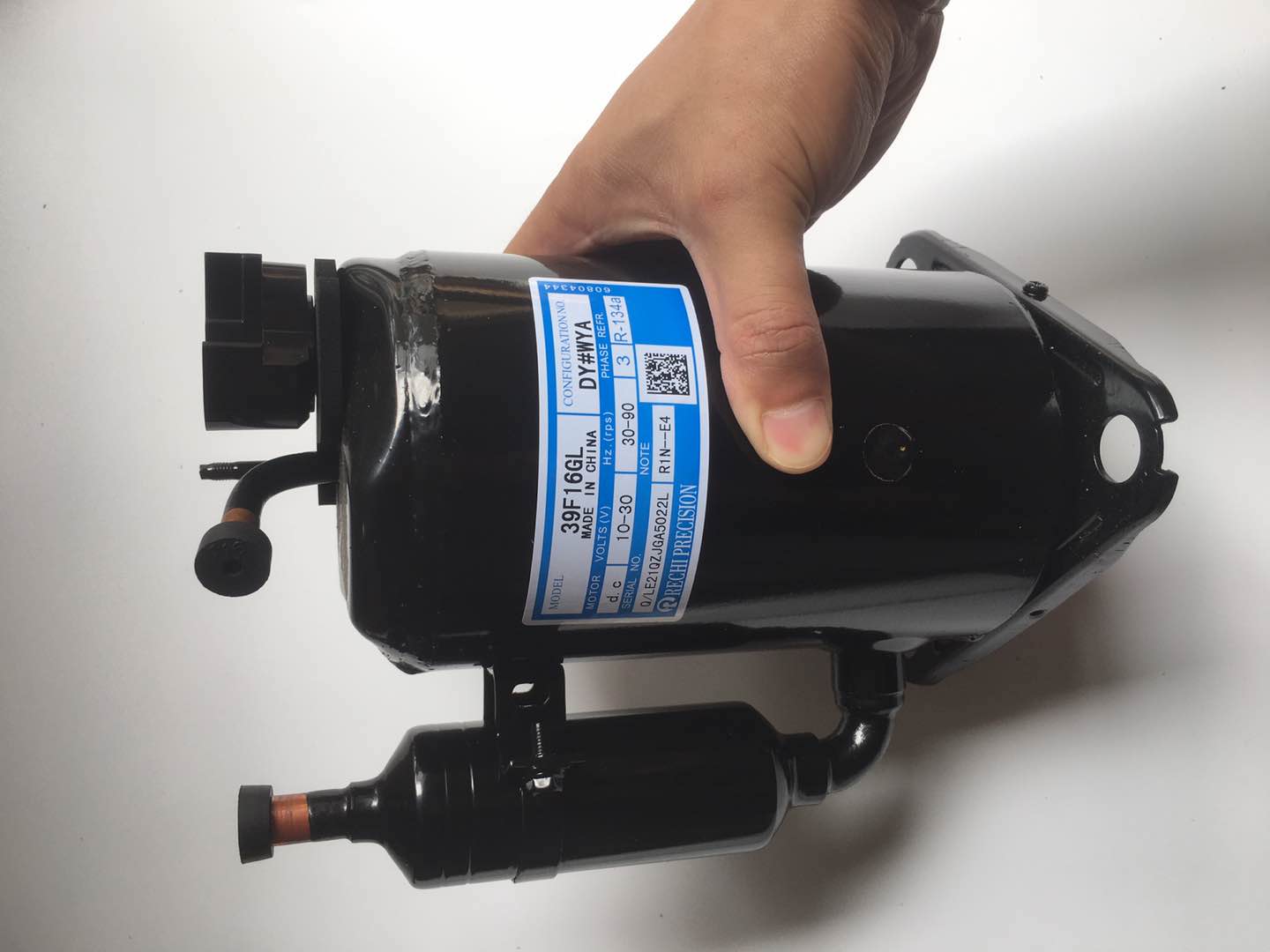
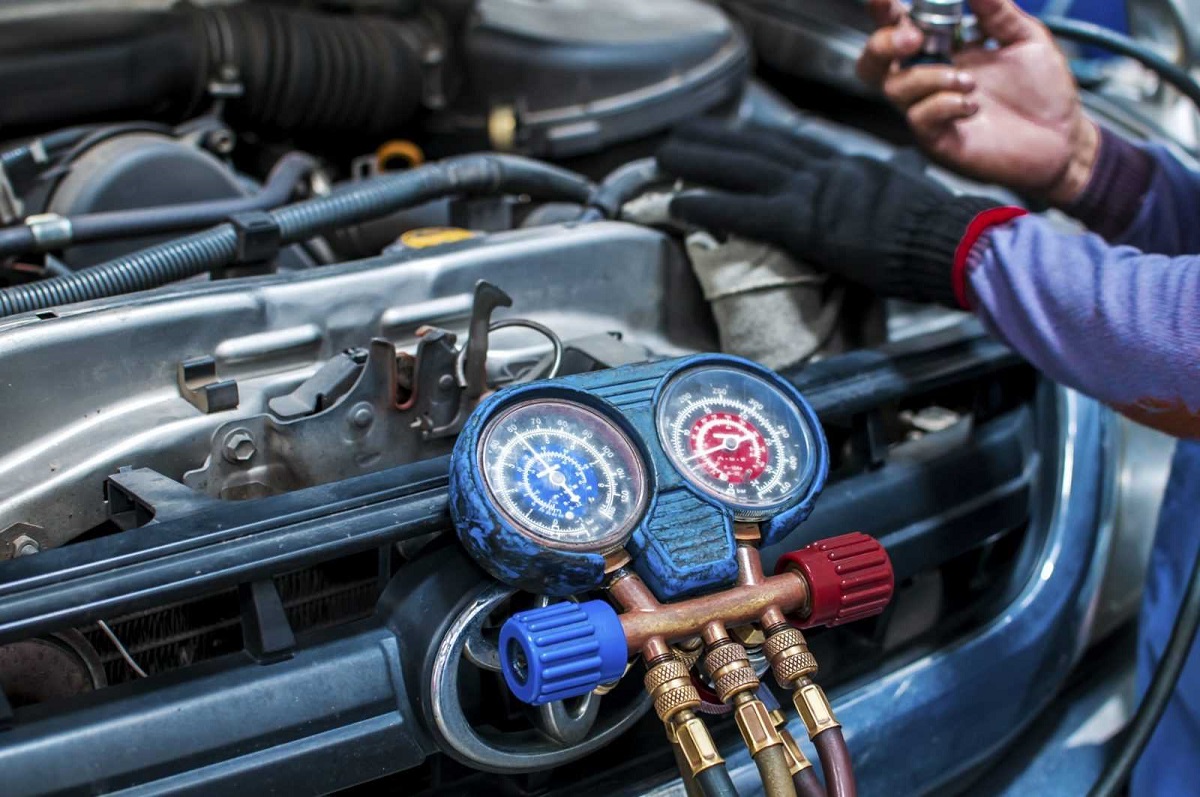

0 thoughts on “Car AC Only Cold When Driving”